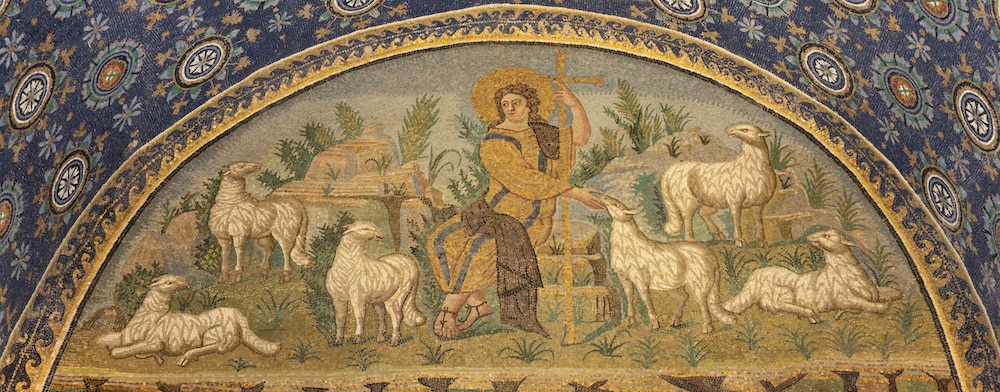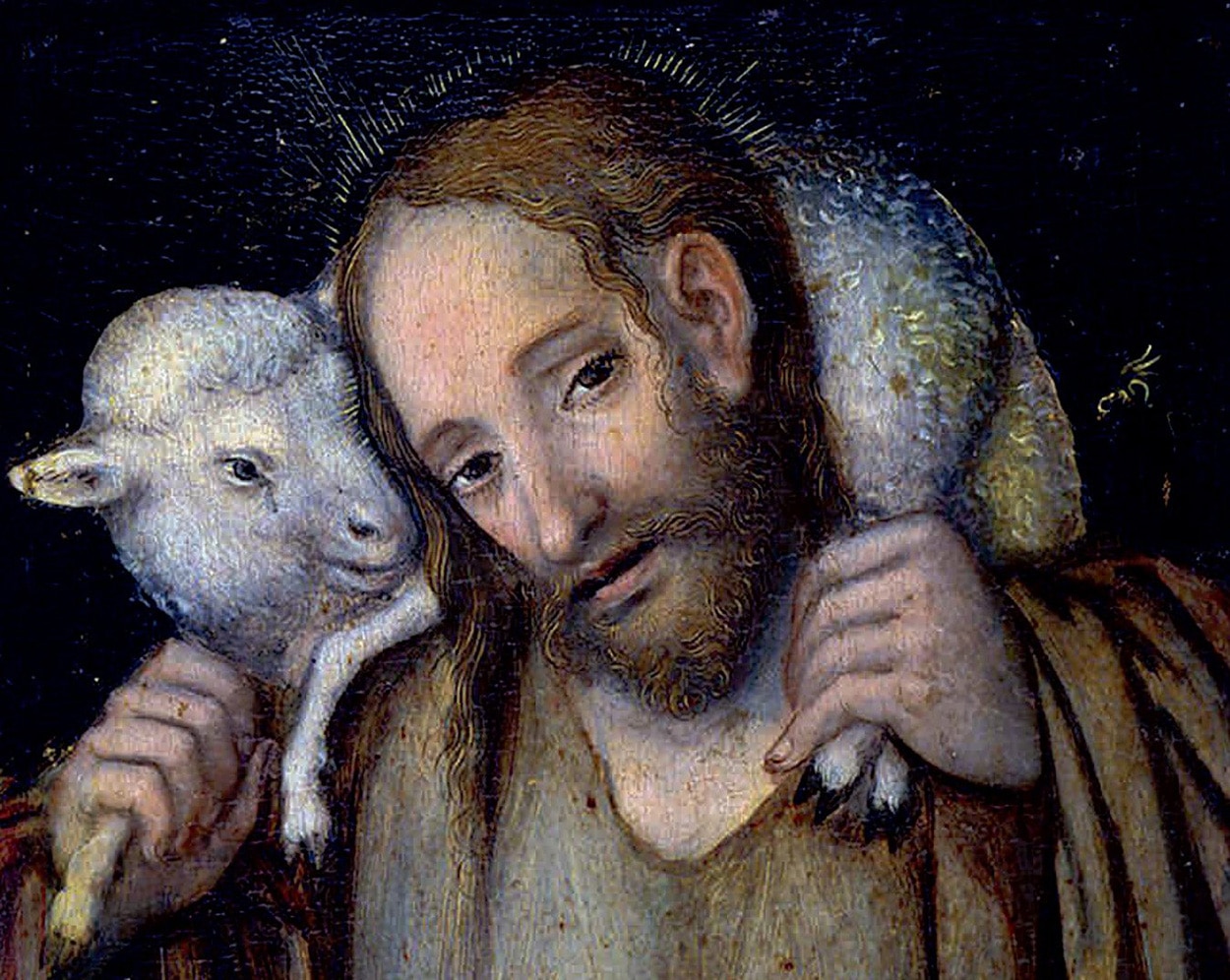This Sunday is the Fourth Sunday of Easter, and so it is “Good Shepherd Sunday.” We will hear the set of readings that naturally culminates in Christ’s words: “I am the good shepherd. A good shepherd lays down his life for the sheep.”
With these words, Christ gives us an image through which we can ponder the salvific work of his death and resurrection. In preparation for this Sunday, then, let us meditate on the image of the Good Shepherd so that it might lead us to a deeper understanding of the mystery of Christ’s death and resurrection as our salvation. Toward this end, then, I will juxtapose the image of the Good Shepherd from Christian antiquity with an image of the Resurrection from the Eastern iconographic tradition.
In the iconographic tradition of the East, there are only two depictions of the Resurrection: “The Descent into Hell” and the “Myrrh Bearing Women at the Tomb.” I’d like to juxtapose the first of these with the Good Shepherd. You are likely already familiar with icons of “The Descent into Hell.” In case you are not, I borrow here from Paul Evdokimov’s expert description of the icon.

He draws the scene for us: “The ‘black abyss’ of hell fills the background of the icon, and at the center we see Christ appear like a ‘lightning-bolt.’ … He is a brilliantly shining light, the master of life, charged with the dynamism of the Holy Spirit. … He is dressed in Light which is the attribute of his glorified body and the symbol of divine Glory. This is why his clothing is of supernatural whiteness. … He is the Lord, but his only power is Love crucified and the invincible power of the Cross. … In a powerful hand movement, Christ yanks bewildered Adam and Eve from [their tombs]” (“The Art of the Icon,” Oakwood).
In this way, capturing the flow of light and the energy of love, the icon of the “Descent into Hell” attempts to capture the mystery of the Resurrection. Christ, bearing his wounds of love, has gone down into our death to pull us up into his own life — a life that is love itself.
God lifts us
Similarly, the image of the Good Shepherd presents God’s bending down toward us so that he could lift us and carry us home to life with him. Thus, like the icon of the “The Descent into Hell,” the image of the Good Shepherd is a way to understand the salvific mystery of Christ’s death and resurrection as our entrance into God’s life of divine love. Indeed, the image of the Good Shepherd was an image of Christ used by the early Church to present the Gospel long before any attempt to depict the risen Lord or even the crucified Lord, more literally.
| April 21 – Fourth Sunday of Easter |
|---|
|
Acts 4:8-12 Ps 118:1, 8-9, 21-23, 26, 28, 29 1 Jn 3:1-2 Jn 10:11-18 |
However, the image of the Good Shepherd is not a literal presentation of the glorious and brilliant “lightning bolt” of love, shining out against the dense abyss of death. Rather, it is a more mundane image, familiar to the daily life of ancient Israel and the early Church. Thus, the juxtaposition of the two images allows us to imagine God “at work” in our daily lives. We can contemplate the power of his love, “charging” each and every day with the “dynamism” of God’s love.

Truly, God seeks us out, even amid our sins, to lift us up into a relationship with him. What we contemplate, then, in the image of the Good Shepherd this Sunday is Christ going to his lost sheep, and bringing them himself into life with God, just as Christ has said: “I am the good shepherd, / and I know mine and mine know me, / just as the Father knows me and I know the Father; / and I will lay down my life for the sheep.”







